A dal bhat (Nepali traditional dish) in the stomach after this thrilling sail down, I wait by the road for a coach that goes to the Chitwan national park. They load my big rucksack on the roof of the bus and this one starts again. A few hours later, the coach drops me off as we cross the city of Narayanghat. A horde of touts surround me but I draw the lethal weapon saying I've already booked a room in a lodge. At this time, somebody approaches me, I hop on the back of his motorbike and we leave to the bungalows camp, not far from the park entrance. We leave the main road for muddy paths and a vague feeling of freedom. The afternoon is quite over and the twilight turns up. The stroll planned for the afternoon is canceled and I directly carry on the dinner. Vegetarian escalope. African specialty. The darkness covers the camp and is the harbinger of a relaxing night.
The next morning, after a quickly swallowed breakfast, I mount the motorbike to go by a river which flows through the park. The gondolier settles 2 chairs at the front of his boat, then he pushes the bank back with the paddle. We slowly sail down the river watching myriad of birds fluttering and chattering into the air. Into the water, taciturn crocodiles and ill-fitted-teethed gavials despise us and keep on resting. These first hectometers intoxicate me. Superb blue-breasted kingfishers ferret around on the top of branches. The Nepali gondola drops us off on a bit of marshy meadow while the trees of the opposite bank are reflected in the water and welcome us.





We swap the wooden chairs for a pair of binoculars the guide carries with a shoulder strap and leave to meet the animals of the forest. We juggle the clods of earth and sometimes end onto a sponge-like turf. A little bit further, in the undergrowth, the surface of a transient lake gives a tribute to the knotty trees of its shore. An eerie shimmer throws into a fairy tale. The guide spies every move and every sound behind the bushes. We disturb some deers which run away. The squeaking of our steps don't belong to their range of known and accepted sounds.




Our loop ends at the elephants breeding center. Several young and less young, shamefully tied specimens trudge their imposing old bones covered with a thick grey skin. Nothing more than a mini-zoo. We cross the river and go back to the camp to have lunch.







In the beginning of this afternoon, our jeep goes by the different camps to pick up tourists, then follows the path on the edge of the park. With 2 Japanese, I share the square dome harnessed on the back of an elephant. The elephant driver grabs one of its ears, leans his foot on the trunk and mounts onto the elephant's neck. He places his feet behind its big ears and communicates with the quadruped like that. Its gangling walk shakes us all over the place but I won't swap my seat for the most comfortable armchair. Let's go for the elephant safari! I'm surprised at the obedience of the giant quadruped. It does the elephant driver commands, "turn right", "turn left", "faster", "stop" and all of those, only with the feet pressing on its ears. When a branch or a shrub hinders the way, the elephant driver shouts an order, the trunks raises, seizes the hindering branch and rips it off with an astonishing ease. But the elephant has its mood swing as well and a stick is there to remain it back the boss of the stroll. A knock on the frontal bone vents a muffled sound we hear resonating and spreading along the cranium bones of the powerful animal.
The grass is beyong 3m high and the elephant unchangeably goes forward. Our eyes look for the animal presence. And despite the noise made by the pachyderm during its walk, animals let us approach. The small human beings perched on its back are forgotten and we take part in the animal kingdom. Beautiful deers eat and male peacocks attempt to win the female. We won't see the fierce Bengal tiger which however ornates every billboard of the Chitwan park. Their dangerously low number is threaten by the smugglers who make a fortune selling them to their Chinese neighbours. The organs of the tiger are in the composition of the so-called miraculous medicines of the traditional Chinese medicine.






On the way back, my eyes get a familiar feature in the distance. Familiar since I was child and glanced through animal books. A superb breast-plated quadruped sets off with a horn on the snout. Our safari reaches its climax. Like kids, and sorry to disturb its serenity, we admire this fabulous rhinoceros. It only drinks in a small pond and this trivial, daily moment changes into an exceptional and magical time for me. And for a long time, I'll talk about this rhino I admire from the back of an elephant somewhere at the borders of Nepal.%%




Keyword - national parks -
Monday 3 September 2007
In pursuit of the one-horned rhinoceros
By dorian on Monday 3 September 2007, 16:51 - RTW-Nepal
Friday 10 August 2007
The stone colossuses of the Wulingyuan
By dorian on Friday 10 August 2007, 14:03 - RTW-China
Absolutely unknown by the Western tour operators, the jagged massif of the Wulingyuan is certainly one of the most beautiful in China. Personnaly, it's the one I like the best. With great pleasure, I come back to this place with my family.
We arrive in Zhangjiajie city by the nighttrain and a local travel agent drives us to Zhangjiajie village, one hour from here. This village is located near the south entrance of the Wulingyuan national park and is still the best spot to begin the stroll and to rest after a day spending in the park. We buy a 2-day valid ticket and in order to avoid the magnetic cards trafficking, the entrance turnstiles are equipped with fingerprints readers. Nothing to forget about the exorbitant price of the ticket: 245 yuans (24,5 €) ! 8 € more than 2 years ago!
We go through the entrance and on the left side, monkeys families expect we throw some sweets.


200m after the entrance, a map shows the different paths which ornate the park. We turn right, cross a bridge and walk forward on a paving stone trail that runs away into a thick nature. A few games (short hurdles and stone mushrooms) decorate the way.

Approaching the summit, our steps slow down then stop at a breathtaking viewpoint. The ascension inside the undergrowth didn't portend such a splendour while our eyes open up in front of this nature-bequeathed marvel. Balustrade-leant elbows, our eyes scan the scene. Stone colossuses face us. The Gods relax playing a game on this giant chess board. These natural obelisks, tall as the Eiffel tower for some of them, harmoniously flaked and gorgeously topped by a tuft of pine trees beautifully vie with themselves.
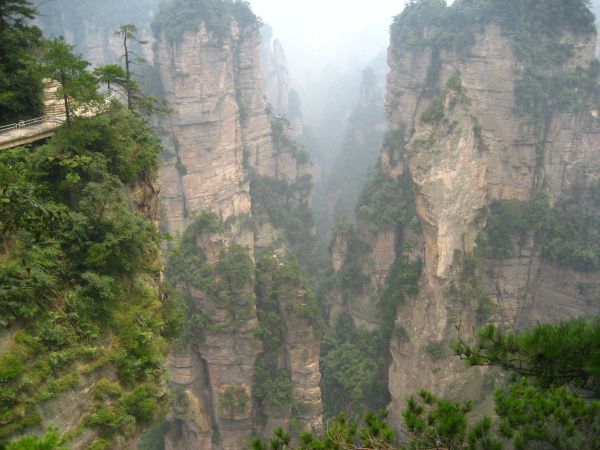
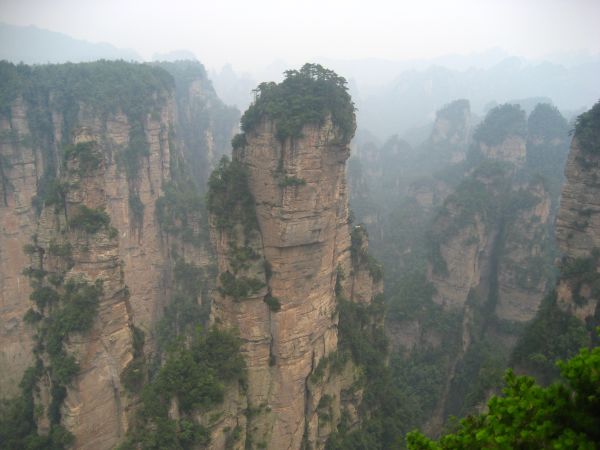
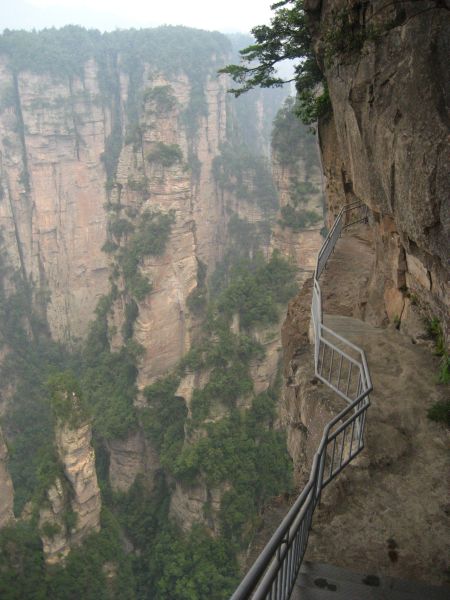
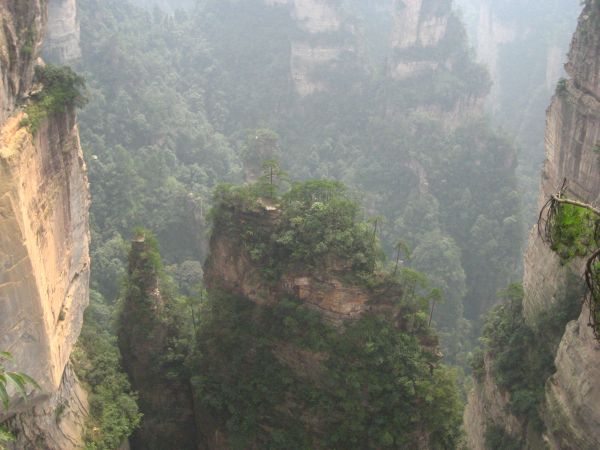
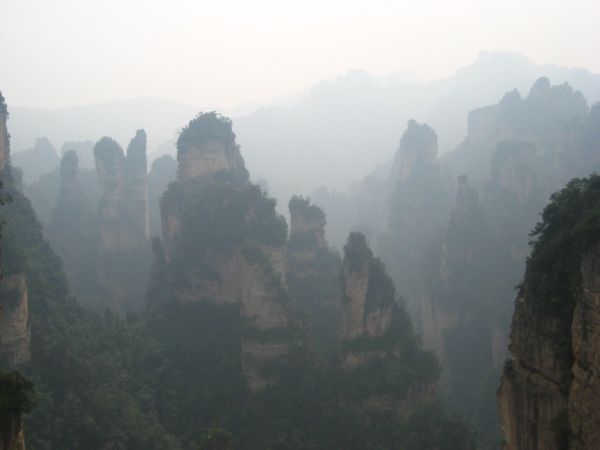
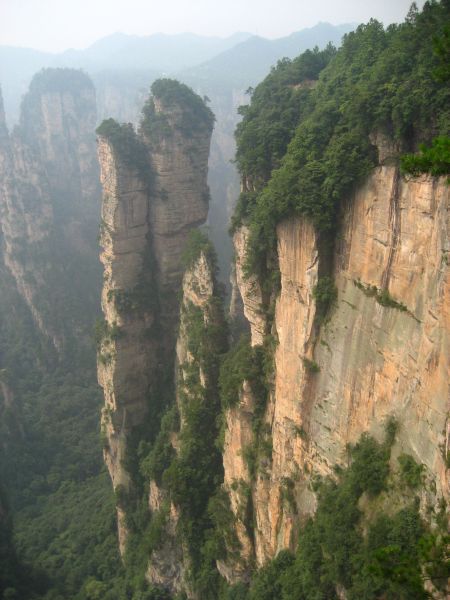
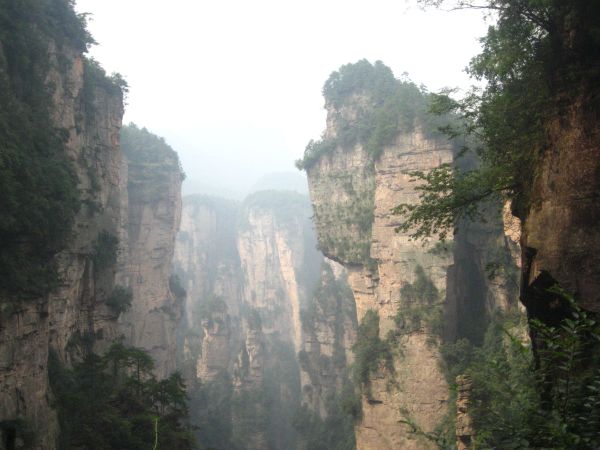
A mist halo intensifies the mysticism of the place. Several viewpoints were built along the way; but none of them gives us a rational explanation of this granite columns field. Our spirit can't however analyse any more. He's overwhelmed by this flood of light and splendour bringing by our eyes.
Several hours went by, the ascension efforts are completely forgotten. We walk down to the valley to sail among the towers. Strips of green forests cling to the spurs of the stony titans, attempt a vain ascension to its steep walls and bump into its breathtaking verticality. Among the columns, wayfaring ants move about. We wander about into these wildly big petrified fields.
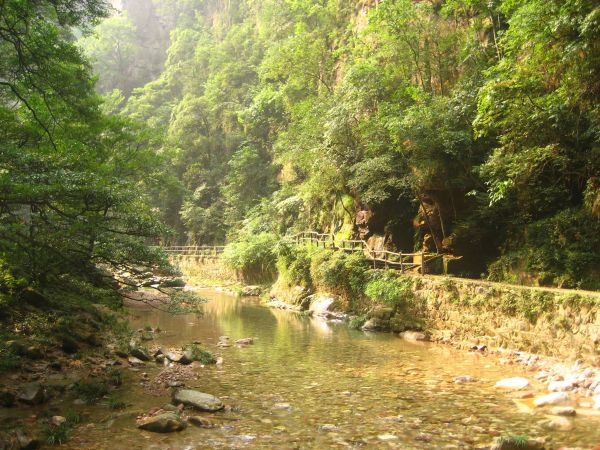

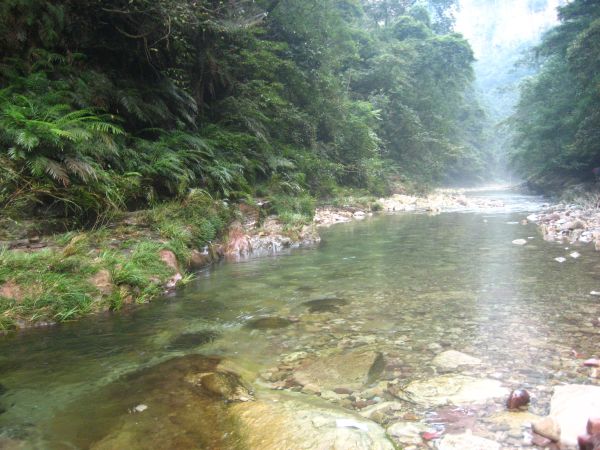
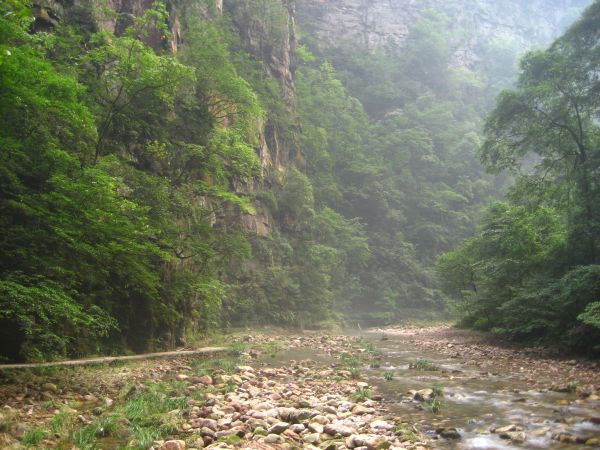

The eyes glued skyward, we go back to the park entrance.
The next day, we go again through the park to reach a lift hanged on one of these granite obelisks wall. A last fill-up of feelings before leaving the park.
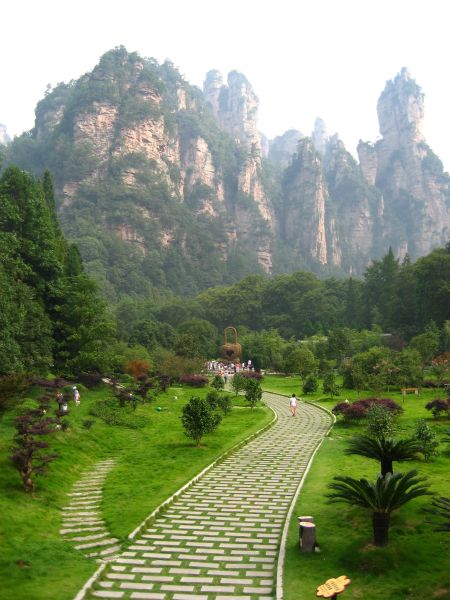
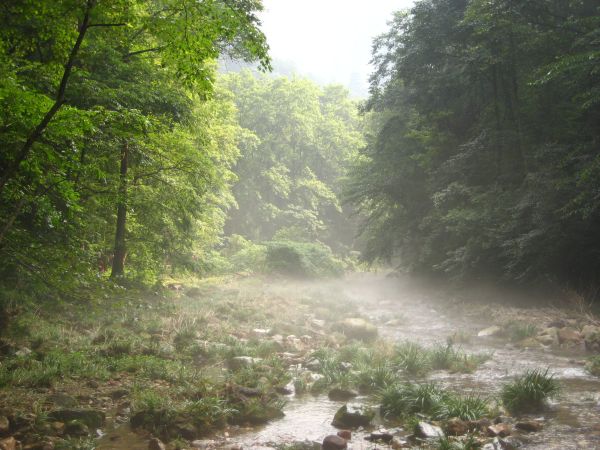


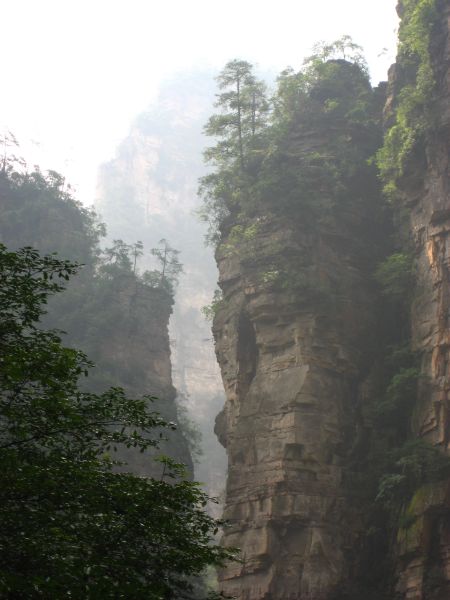
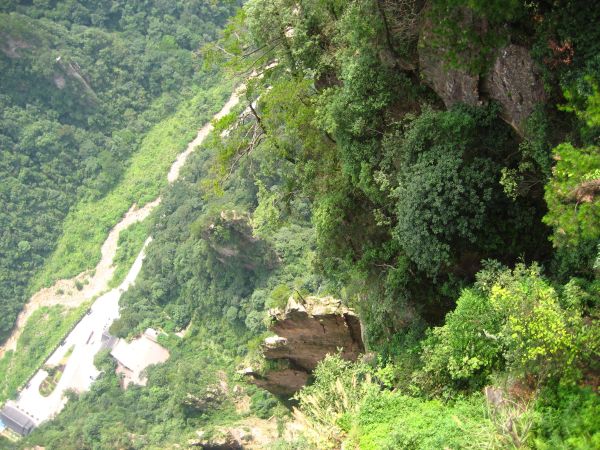
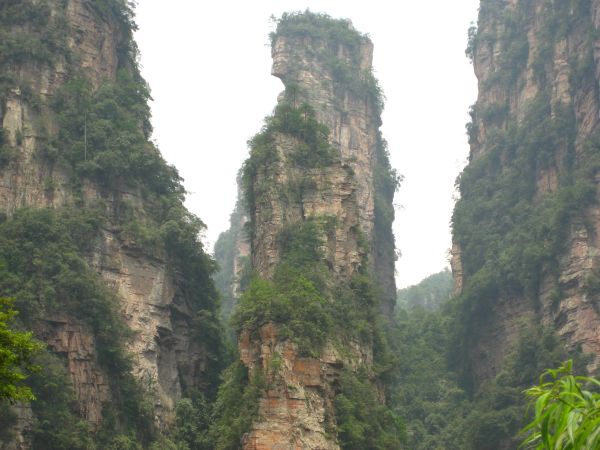
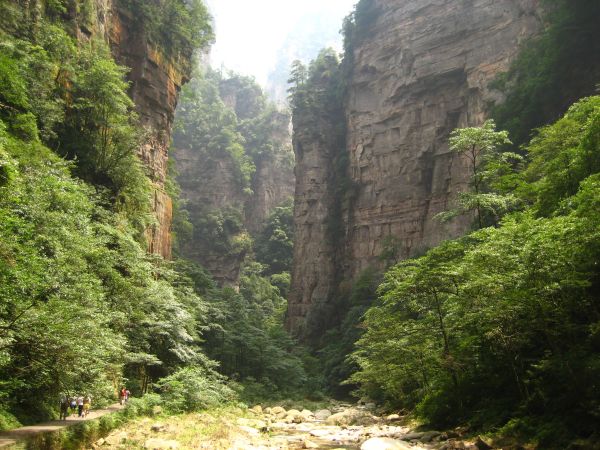
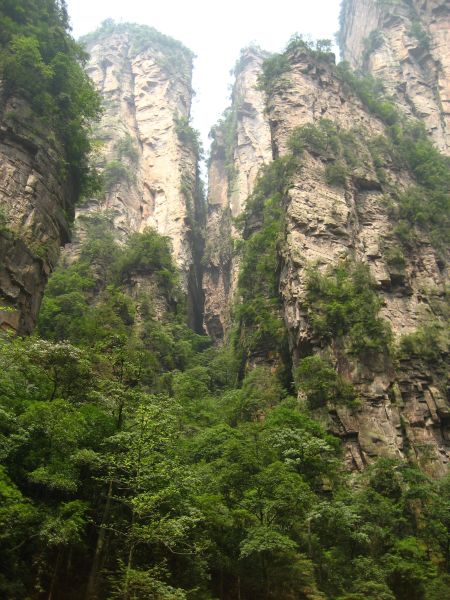
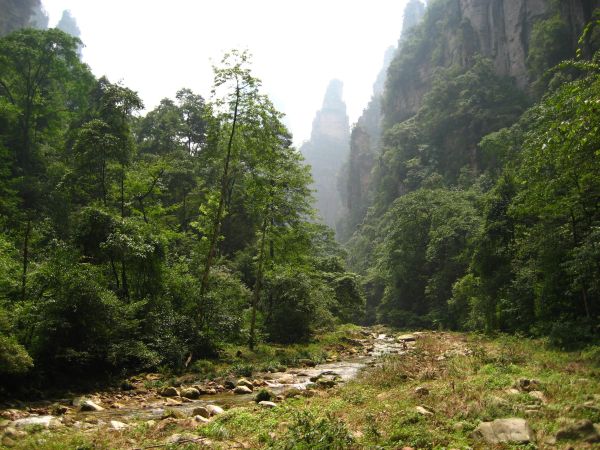
In the evening I take Armelle to the airport. She got promoted up to backpacker apprentice. The rhythm was a little bit sustained and I was happy to share a part of my trip with her. And she followed without turning a hair.
A sample of the traveller life I have enjoyed for 2 months.
Friday 20 July 2007
alpine feelings near the Khovsgol lake
By dorian on Friday 20 July 2007, 22:29 - RTW-Mongolia
I spend a whole day in Möron to recover from this long trek in the Mongolian nature. I landed by chance in a warm-hearted place which is called Bata's Guesthouse.
In this province capital city that counts up a little more than 35000 people, the houses are a set of rickety buildings. The villagers don't have current water and they supply themselves from a few public spots. So, they carried all the water we use in the guesthouse in tanks. And if you want to take a hot shower, you must ask the owner. He will light a fire to warm the watertank. The prices are particularly low since we can sleep for less than 3€ and you can order a handmade pasta and mutton meal for 1€ exactly.
The village is of no tourist interest except being the departure point to the Khatgal village on the shore of the Khovsgol lake, 3h northward by jeep. Some people take the advantage of being here to arrange a trip up to the white lake, the Tsataans' land. Tsataans people are a sort of nomadic ethnic minority that live from the reindeer breeding. A special authorization is necessary to approach them and the nomadism is the only thing in common they share with the Mongolians. Their housing looks like a tepee and throughout the year, they move seeking for a specific grass for their reindeers. This animal provides them with the meat and the skin and can be used to carry various things for their frequent moving.
I satisfy myself with staying in the Khatgal village and enjoying the alpine scenery of the lake. A lot of people compare it to the little bit northern Baikal lake. The crystal-clear waters and the shimmering reflection at sunrise attract a lot of tourists. Mainly Mongolians coming from Ulan Baatar who camp on the lake shore with the family.






The ecosystem is endemic in this area. The several peaks, mounds and hills which surround the lake are covered in pine-trees forests. The landscapes remind me of the Alps at the summertime. I step a few hours on the West bank of the lake ; then, I climb one of the hill to get a view from above over the water area. Herds of yaks reside here, around the lake.



The next day, I go for a horseback riding with a guide on the other shore of the lake. We stop in several gers where the dwellers offer us the traditional hospitality. I really enjoy the "Tarag" (homemade yoghurt). A few lucky people have the opportunity to go round the lake by horseriding, Other ones will prefer the kayak.


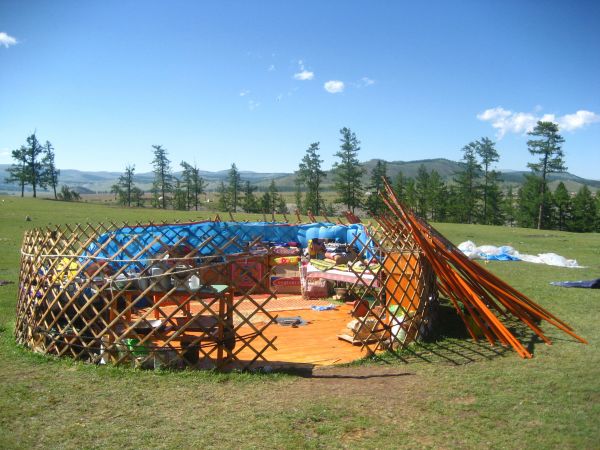
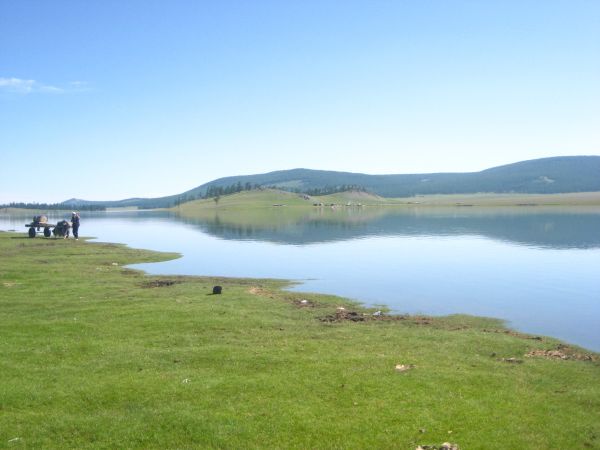

In the guesthouse, I meet a breton couple who are members of a French-Mongolian friendship association and through this association, members can buy a ger, made in Mongolia and delivered in France by container ship. Several choices are possible, from the furnishing to the surface area. And for 5000€, you can live in a cosy Mongolian atmosphere at the bottom of the garden. For the association's website (in French), here is the link : www.avelnomad.org
After contemplating this invigorating and inspiring nature, I go back to Moron before flying back to Ulan Baatar. The Mongolian loop is over. The day after tomorrow, I'm taking the transmongolian train to live the tribulations of a Frenchman in China. A wonderful experience ends and the trip goes on.
page 5 of 5 - next entries »





 visits
visits